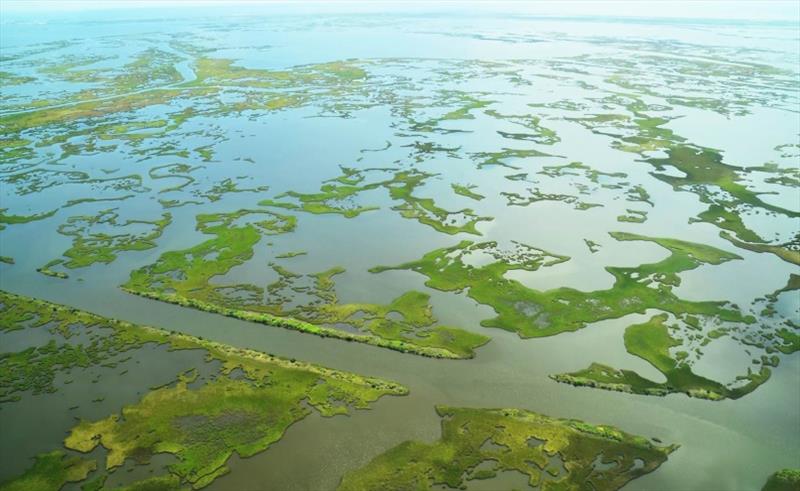
Restoring the Gulf: 10 years after Deepwater Horizon oil spill
by NOAA Fisheries 18 Apr 2020 15:52 UTC

Aerial view of Barataria Basin marsh, part of the Gulf Spill restoration © NOAA Fisheries
This April, NOAA is commemorating 10 years since the Deepwater Horizon oil spill in the Gulf of Mexico, considered the largest U.S. offshore oil spill in history, resulting in the tragic loss of human and marine life.
NOAA and other federal and Gulf state partners are working with the public, partners, and industry to support restoration and recovery of the Gulf of Mexico's natural resources using the $20.8 billion environmental damage settlement.
NOAA is using lessons learned from the spill and subsequent research to be even better prepared to provide expert scientific support during responses and damage assessments of present and future oil spills.
Explore the features below to learn how more about the ways we are restoring the Gulf and the progress we've made 10 years after the Deepwater Horizon oil spill.
Deepwater Horizon: A First Hand Account of the Spill
Senior Scientist Lisa DiPinto from NOAA's Office of Response and Restoration remembers what it was like to witness the Deepwater Horizon oil spill. Watch the video below to hear her first hand experience of the spill's aftermath.
Deepwater Horizon: The Science Behind NOAA's Unprecedented Response
Senior Scientist Lisa DiPinto reveals the science behind NOAA's response to the Deepwater Horizon oil spill.
Learn more about NOAA's response...
Features
How we're restoring the Gulf 10 years after Deepwater Horizon
From the coastal marshes to the deepest parts of the Gulf of Mexico, the entire ecosystem was impacted by the Deepwater Horizon oil spill. Now, NOAA and federal and state partners are leading the largest environmental restoration effort ever there.
Learn more about our work to restore the Gulf
10 years of NOAA's work after the Deepwater Horizon oil spill: A timeline
Learn the details of the work we've done over the past 10 years—responding to the spill, assessing the damage, developing a restoration plan, and implementing on-the-ground restoration projects—and how our work is continuing today.
Learn more about key restoration milestones
Dolphin discoveries in the decade since Deepwater Horizon
Assessing the impacts of the spill on marine mammals in the wild is a complex task and can require years of ongoing study to understand how exposed animals are recovering. Since 2015, NOAA experts have partnered with scientific leaders from a diverse range of backgrounds to continue studies to determine how dolphins and large whales were impacted by the spill.
Learn more about dolphin discoveries in the decade since Deepwater Horizon
Deepwater Horizon 10 years later: 10 Questions
Check out the top questions NOAA scientists receive about the oil spill and the historic restoration effort of the Gulf of Mexico.
Read frequently asked questions about the Deepwater Horizon oil spill
Deepwater Horizon oil spill settlements: Where the money went
The oil spill triggered economic, environmental devastation, and a legal battle. It was largely settled when a Federal District judge approved the largest environmental damage settlement in United States history - $20.8 billion - on April 4, 2016.
Learn more about the Deepwater Horizon settlement
Gulf Spill Restoration
After the Deepwater Horizon oil spill, scientists, economists, and restoration experts came together to collect data, determine the extent and magnitude of injuries, and plan and implement restoration projects.
The federal and state trustee agencies responsible for helping the Gulf recover are now restoring its habitats, wildlife and marine resources through the year 2031. Our partners' work will continue for years after that.
Learn more about restoration projects in the Gulf